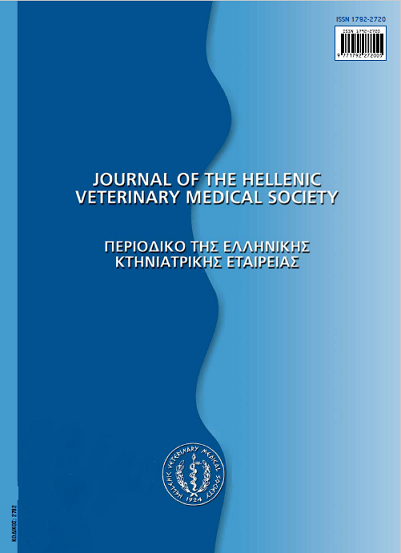First case reported of bronchoconstriction in feline aelurostrongylosis by using barometric whole-body plethysmography
Résumé
Symptomatic cats infected by Aelurostrongylus abstrusus show non-specific and respiratory clinical signs, often misdiagnosed as other diseases more prevalent among feline population, such as allergic respiratory disease or heartworm associated respiratory disease (HARD). Clinical signs are due to the pulmonary inflammatory response caused by the eggs shed by the adult females and the migration of the first-stage larvae up the bronchial tree. Barometric whole-body plethysmography (BWBP) is a non-invasive pulmonary function test that allows a dynamic study of breathing patterns by placing the patient within an unrestrained Plexiglas chamber. This is the first report that determines the degree of bronchoconstriction caused by A. abstrusus infection in a cat by using BWBP, showing an increase of baseline measurements of bronchoconstriction indexes (Enhanced pause and Pause) in response to severe bronchial reactivity, a consequence of the airway inflammation caused by the presence of A. abstrusus.
Article Details
- Comment citer
-
GARCÍA-GUASCH, L., MANUBENS, J., LAPORTA, M., CARRETÓN, E., & MONTOYA-ALONSO, J. A. (2018). First case reported of bronchoconstriction in feline aelurostrongylosis by using barometric whole-body plethysmography. Journal of the Hellenic Veterinary Medical Society, 66(2), 101–105. https://doi.org/10.12681/jhvms.15615
- Numéro
- Vol. 66 No 2 (2015)
- Rubrique
- Case Report

Ce travail est disponible sous licence Creative Commons Attribution - Pas d’Utilisation Commerciale 4.0 International.
Authors who publish with this journal agree to the following terms:
· Authors retain copyright and grant the journal right of first publication with the work simultaneously licensed under a Creative Commons Attribution Non-Commercial License that allows others to share the work with an acknowledgement of the work's authorship and initial publication in this journal.
· Authors are able to enter into separate, additional contractual arrangements for the non-exclusive distribution of the journal's published version of the work (e.g. post it to an institutional repository or publish it in a book), with an acknowledgement of its initial publication in this journal.
· Authors are permitted and encouraged to post their work online (preferably in institutional repositories or on their website) prior to and during the submission process, as it can lead to productive exchanges, as well as earlier and greater citation of published work.



